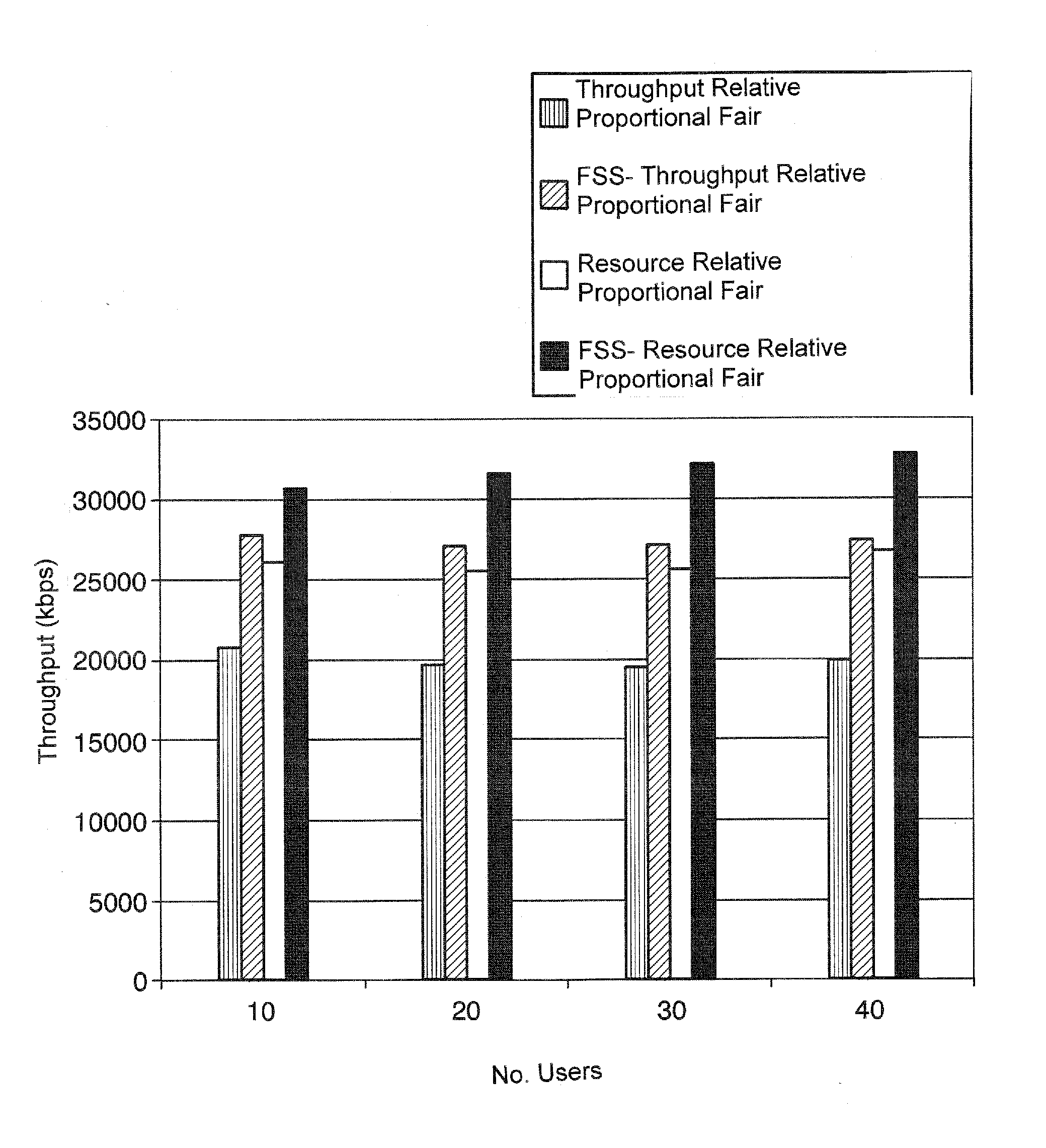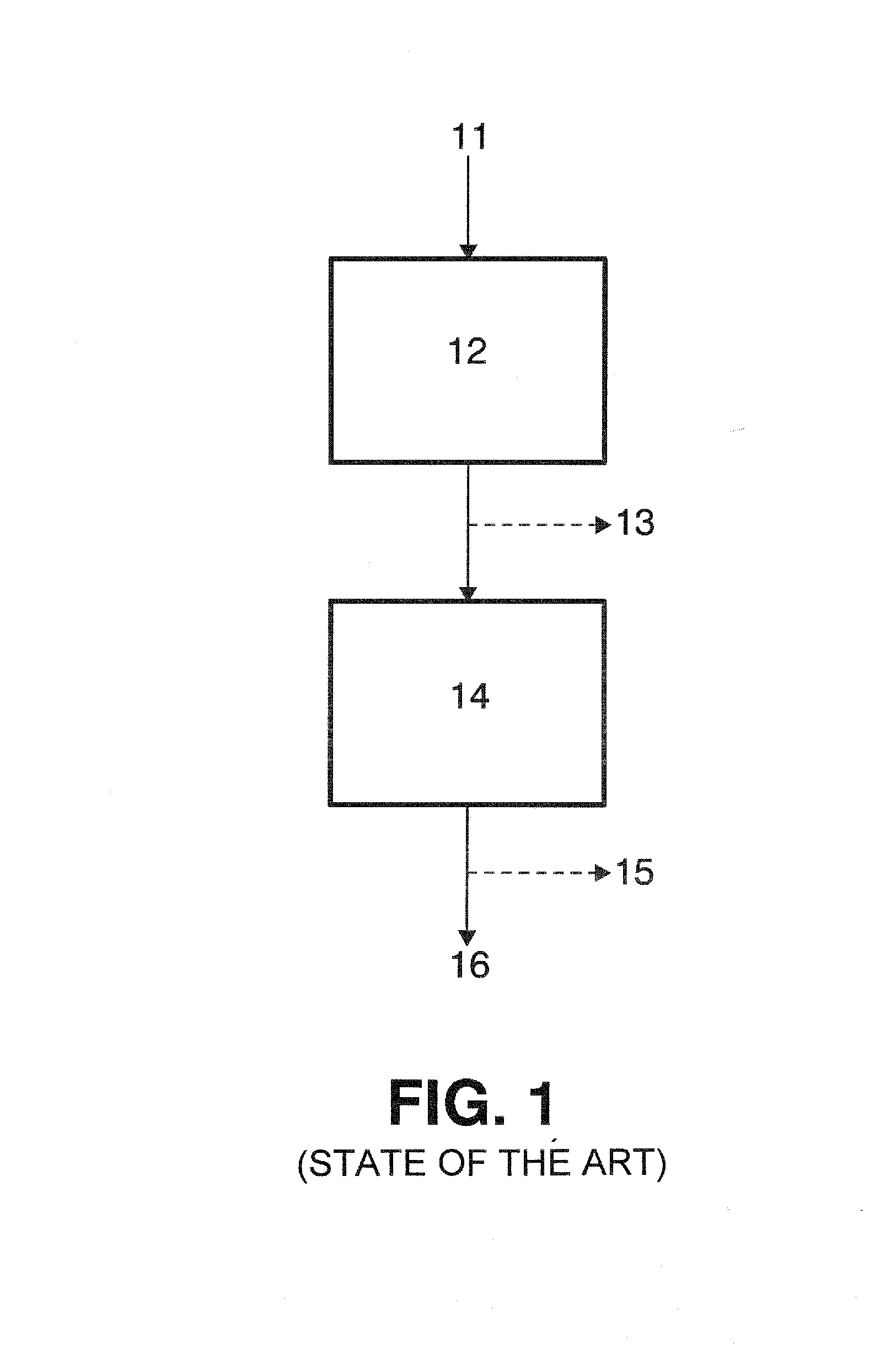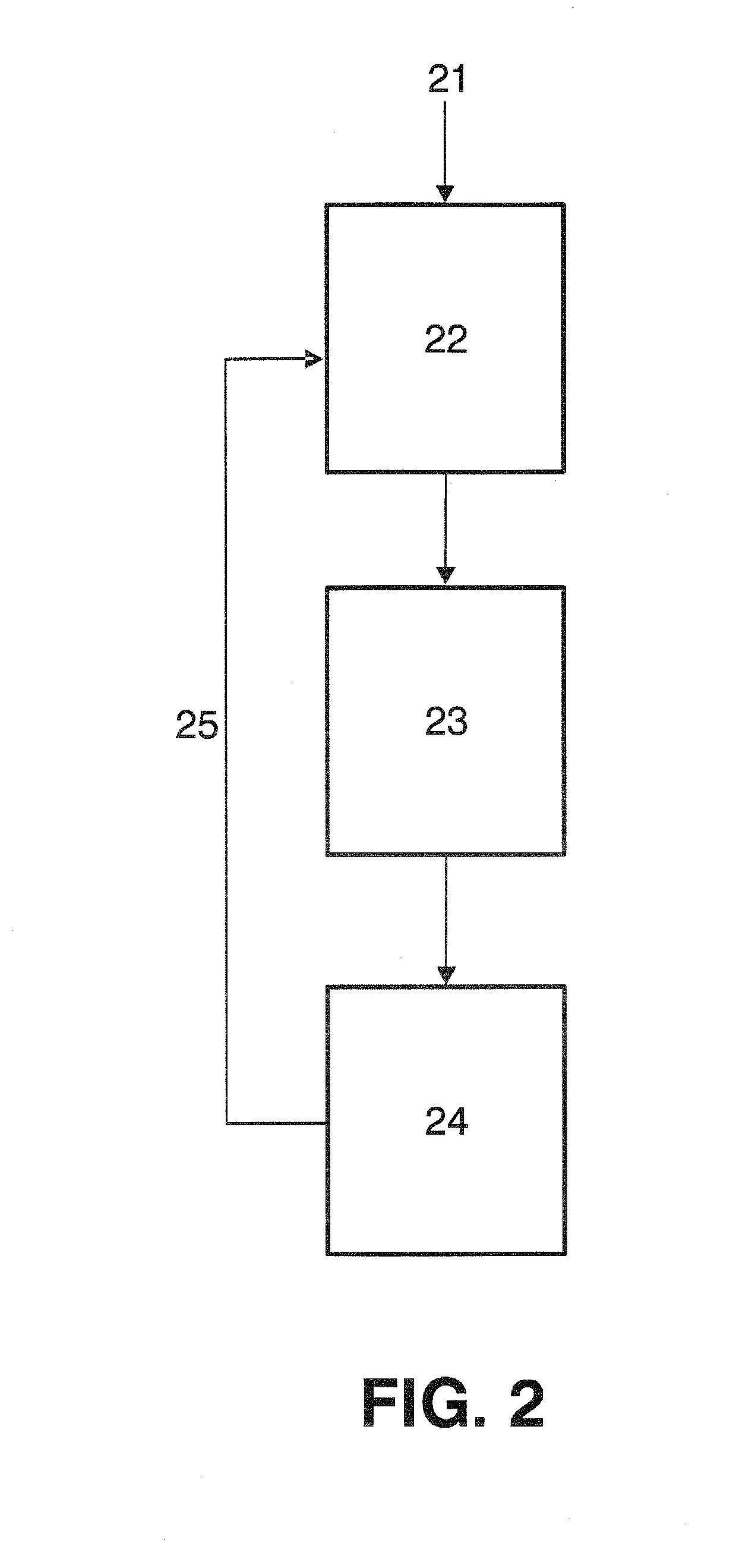Method and network entity for scheduling radio resources in mobile communication networks
a mobile communication network and radio resource technology, applied in the field of wireless cellular network scheduler and method, can solve the problems of inability to achieve method, inability to optimize frequency domain scheduling, and wrong scheduling decisions in time domain, so as to maximize cell capacity, improve user throughput, and low complexity
- Summary
- Abstract
- Description
- Claims
- Application Information
AI Technical Summary
Benefits of technology
Problems solved by technology
Method used
Image
Examples
Embodiment Construction
[0065]The present invention refers to a scheduling method (with two possible versions) and apparatus (in a network entity) for an efficient FSS—Frequency Selective Scheduling—procedure of the users in a cell of a cellular network. For example, in the radio access network according to the LTE standard [3GPP TS 36.213, Evolved Universal Terrestrial Radio Access (E-UTRA); Physical Layer Procedures (Release 8)], the evolved NodeB—eNodeB—is specified to implement a scheduler of the radio resources among the different users, for both uplink and downlink, on a subframe basis, i.e., each 1 ms. There are both time and frequency resources to play with, and a possible implementation of the present invention described here is a method to optimize simultaneously both time and frequency assignments to the users, so that it is possible to maximize the cell capacity in a LTE system, while also improving the users' throughput.
[0066]FIG. 2 shows the main steps of a general FSS procedure implemented i...
PUM
 Login to View More
Login to View More Abstract
Description
Claims
Application Information
 Login to View More
Login to View More - R&D
- Intellectual Property
- Life Sciences
- Materials
- Tech Scout
- Unparalleled Data Quality
- Higher Quality Content
- 60% Fewer Hallucinations
Browse by: Latest US Patents, China's latest patents, Technical Efficacy Thesaurus, Application Domain, Technology Topic, Popular Technical Reports.
© 2025 PatSnap. All rights reserved.Legal|Privacy policy|Modern Slavery Act Transparency Statement|Sitemap|About US| Contact US: help@patsnap.com



